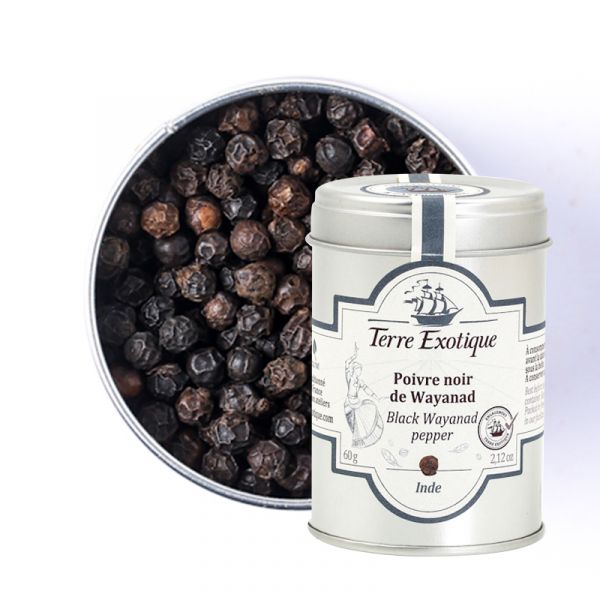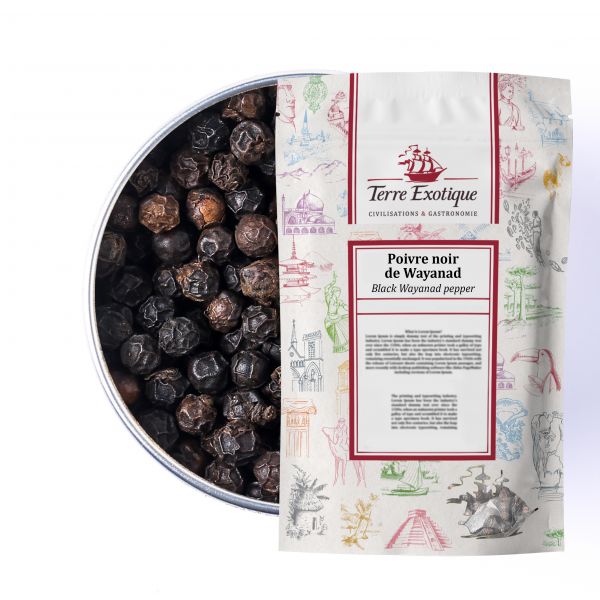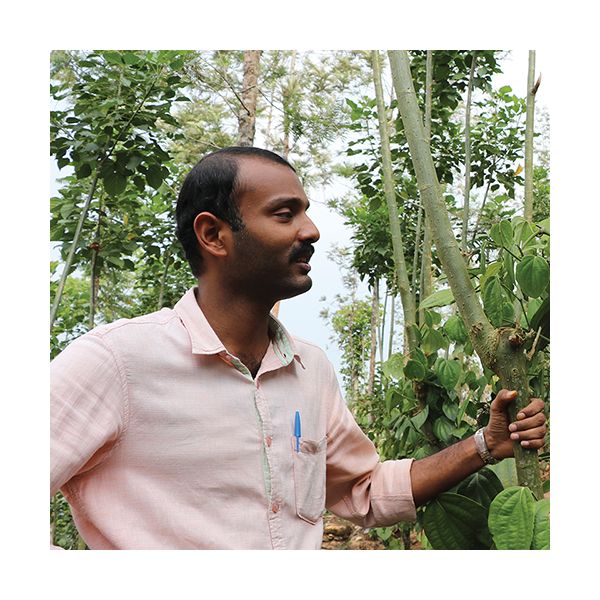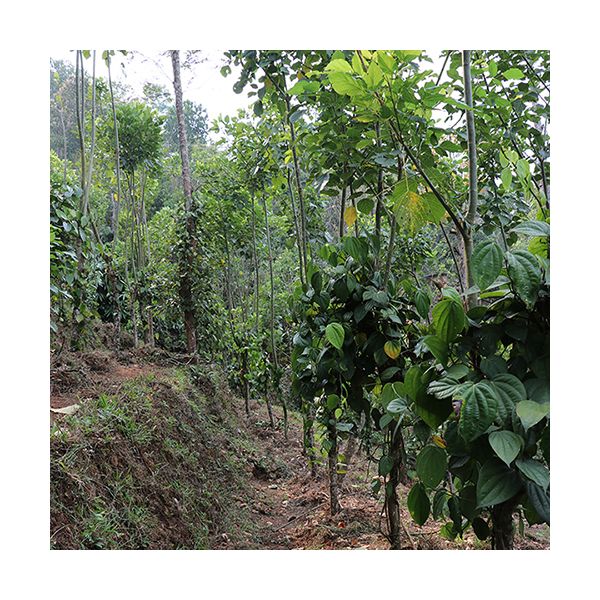







What dishes to use Wayanad black pepper in?
Explore the spicy and aromatic flavors of this Indian pepper
Our advice: whole or ground pepper is a living product that can lose its aroma, oxidize, or become rancid. Preferably store this pepper in a dry place away from light.
How to use Wayanad black pepper?
Our recipe ideas to use Wayanad black pepper in your cooking:
· Wayanad black pepper fish tartare: during the preparation of the juice, add 1 teaspoon of ground black Penja pepper;
·Wayanad black pepper chicken: mix 2 tablespoons of Wayanad black pepper with 1 tablespoon of coriander, 1 teaspoon of cumin, and 1 teaspoon of ground green cardamom, then spread it on your chicken and let it marinate for 30 minutes;
· Wayanad black pepper fish rillettes: add your ingredients and then add 4 turns of the Wayanad black pepper mill before mixing and crushing everything;
·Wayanad black pepper tomato and burrata salad: before serving, add 2 turns of the Wayanad black pepper mill on your burrata and tomatoes;
·Wayanad black pepper pear tarte tatin: once your caramel is made, sprinkle 5 crushed Wayanad black pepper berries and place your sliced pears.
Discover here the Terre Exotique recipe idea with Wayanad black pepper
Codfish fritters and Caribbean sauce Terre Exotique style
The aromas of Wayanad black pepper
On the nose, this pepper releases vegetal notes reminiscent of ratatouille or tomato leaves. In the mouth, it is initially moderately spicy, but once swallowed, it reveals unsuspected power. It pairs perfectly with pear tarts, poultry, red fruit salads, or red meats.
Wayanad black pepper and its botany
The art of picking
The success of a good pepper is notably linked to the quality of picking. The ripening of pepper grains is "asynchronous," meaning that on the same bunch, one can see immature grains (green) and overripe grains (red).
The picking is done according to the different moments of ripeness and depending on the type of pepper desired. The optimal picking to obtain a great pepper crop is done by hand only! This method, more respectful to the plants, allows farmers to select only the most beautiful bunches that have reached optimal ripeness but requires great meticulousness.
The specificities of Wayanad black pepper
This great pepper crop is harvested when it is extremely ripe in the province of Wayanad, one of the fourteen districts of Kerala. Only 2000 kg are harvested each year, and the cultivation of this pepper remains confidential (micro-lot). The grains are left on the pepper plant once they have reached or exceeded their optimal ripeness. Their size increases significantly, and a kind of noble rot develops on the pericarp, which gives the pepper grain sweet notes and a reddish appearance. That is why at Terre Exotique, we consider its harvest to be akin to a late harvest for wine.
Once picked, Indians use a natural method called "dry processing" to dry the Wayanad pepper. The grains are spread out in the sun for two weeks and regularly turned to prevent fermentation during drying.
The history of Kerala black pepper
The region of Kerala and its pepper
On the Malabar coast lies the region of Kerala, renowned as the spice paradise. Indeed, 70% of Indian spice production is in Kerala. It is the region where the English controlled the market in the 18th century. South of Malabar, between mountains and seas, Kerala is at an altitude of 1500 meters, and the climate is conducive to the growth of Piper nigrum vines, which can reach up to 15 meters in height, wrapped around trees. It is here that the Wayanad black pepper grows, considered one of the best varieties of pepper in the region.
| Allergen | Absence |
|---|---|
| Native country | INDE |
| Genus and botanical species | Piper nigrum |
| Ingredients | black pepper from Wayanad |
| Nutritional Info | / |
| TRACES EVENTUELLES D'ALLERGÈNES | céleri, sésame, moutarde, fruits à coques. |
 Français
Français 